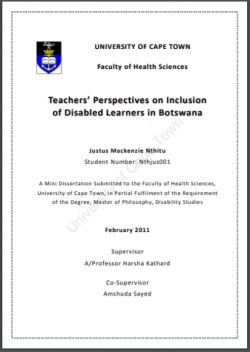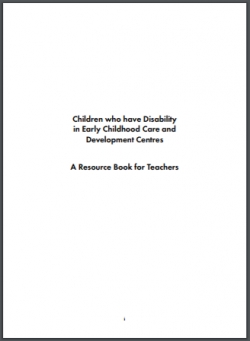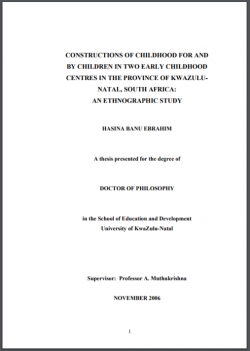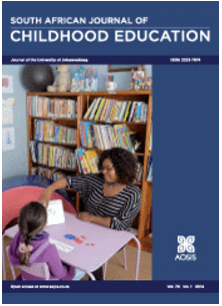Children's Institute Case Study ; no. 4 From sidelines to centre stage : the inclusion of children with disabilities in the Children's Act
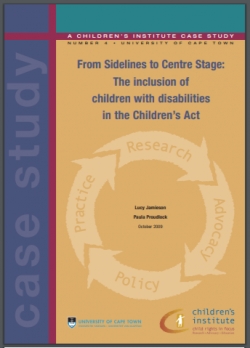
Buy online ($)
Type
E-Book
Authors
ISBN 13
9780981432038
Category
ECCE
[ Browse Items ]
Publication Year
2009
Publisher
University of Cape Town, Children's Institute, Cape Town, South Africa
URL
[ private ]
Pages
74 p.
Subject
Early childhood care and education (ECCE), Vulnerable children, Children with disabilities, Child care and protection, Legislation, Children's rights, South Africa
Tags
Series Name
Abstract
‘Civil society in South Africa has organised itself into various structures to campaign for changes to laws. These structures range from small groups of policy experts to large and empowered social movements. In 2003, the draft Children's Bill was presented to Cabinet, split into two Bills due to parliamentary procedural requirements, and thereafter tabled in Parliament. The two Bills would eventually repeal the Child Care Act of 1983 and introduce a new child care and protection system for South Africa, namely the Children’s Act No. 38 of 2005, as amended by the Children’s Amendment Act No. 41 of 2007.1 Civil society organisations (CSOs) in the children’s sector recognised the Bill as a potential vehicle for addressing the complex challenges facing children in South Africa and therefore wanted to exercise their constitutional right to participate in, and ultimately influence, the law‐making process. Leaders in the children’s sector realised that a coordinated campaign was essential due to the size of the Bill, the breadth of topics that it covered, and the extent of the reforms it proposed. In 2002, the Children’s Institute (CI) secured funds to establish such a campaign. Along with Resources Aimed at the Prevention of Child Abuse and Neglect (RAPCAN), it convened a workshop in 2003 to plan the undertaking and, at a subsequent workshop, the Children’s Bill Working Group (WG) came into being – a loose coalition of children’s sector networks and CSOs wishing to ensure that the Children’s Bill would be passed in the best possible form …
The purpose of this paper is to document the [Disability Task Team] DTT’s advocacy initiatives around the first Children’s Bill and to analyse the factors contributing to its success; the analysis allows us to describe a methodology that can be replicated in future civil society law‐reform campaigns. Throughout the Working Group’s collective Children’s Bill campaign, the CI recorded and evaluated the model of law‐reform advocacy it was developing. Researchers held interviews and gathered other forms of evidence to support both strategic as well as retrospective evaluations of the campaign’s methodology. This case study is one of the research outputs.’ [Introduction]
The purpose of this paper is to document the [Disability Task Team] DTT’s advocacy initiatives around the first Children’s Bill and to analyse the factors contributing to its success; the analysis allows us to describe a methodology that can be replicated in future civil society law‐reform campaigns. Throughout the Working Group’s collective Children’s Bill campaign, the CI recorded and evaluated the model of law‐reform advocacy it was developing. Researchers held interviews and gathered other forms of evidence to support both strategic as well as retrospective evaluations of the campaign’s methodology. This case study is one of the research outputs.’ [Introduction]
Number of Copies
1
| Library | Accession No | Call No | Copy No | Edition | Location | Availability |
|---|---|---|---|---|---|---|
| Main | 845 | 1 | Yes |
